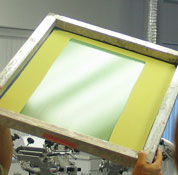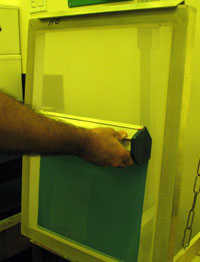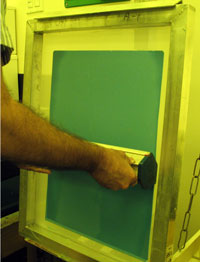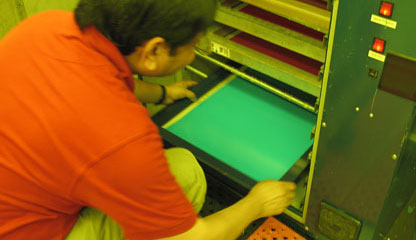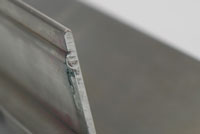WHAT COATING ORDER SHOULD I USE?
Screen makers don't really coat - we scrape. Mesh has holes in it, so maybe emulsion ends up on the other side!
Start coating on the bottom of the screen until you see the emulsion link up on the other side and form a shiny gloss coating.
If you don't fill the holes, when you turn the frame and make final coats from the inside of the screen, air will get trapped in the holes that are now like bubbles, reducing the amount of emulsion in the holes as the water evaporates.
That thin coating ends up looking like a waffle when it's dry.
Start coating on the bottom of the screen until you see the emulsion link up on the other side and form a shiney gloss coating.
Finish with a single coat on the squeegee side of the screen, pushing the emulsion to the bottom of the mesh.
Dry so gravity pulls the emulsion to the bottom of the screen.

